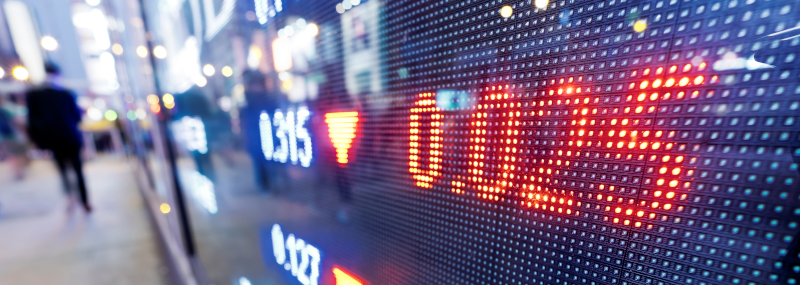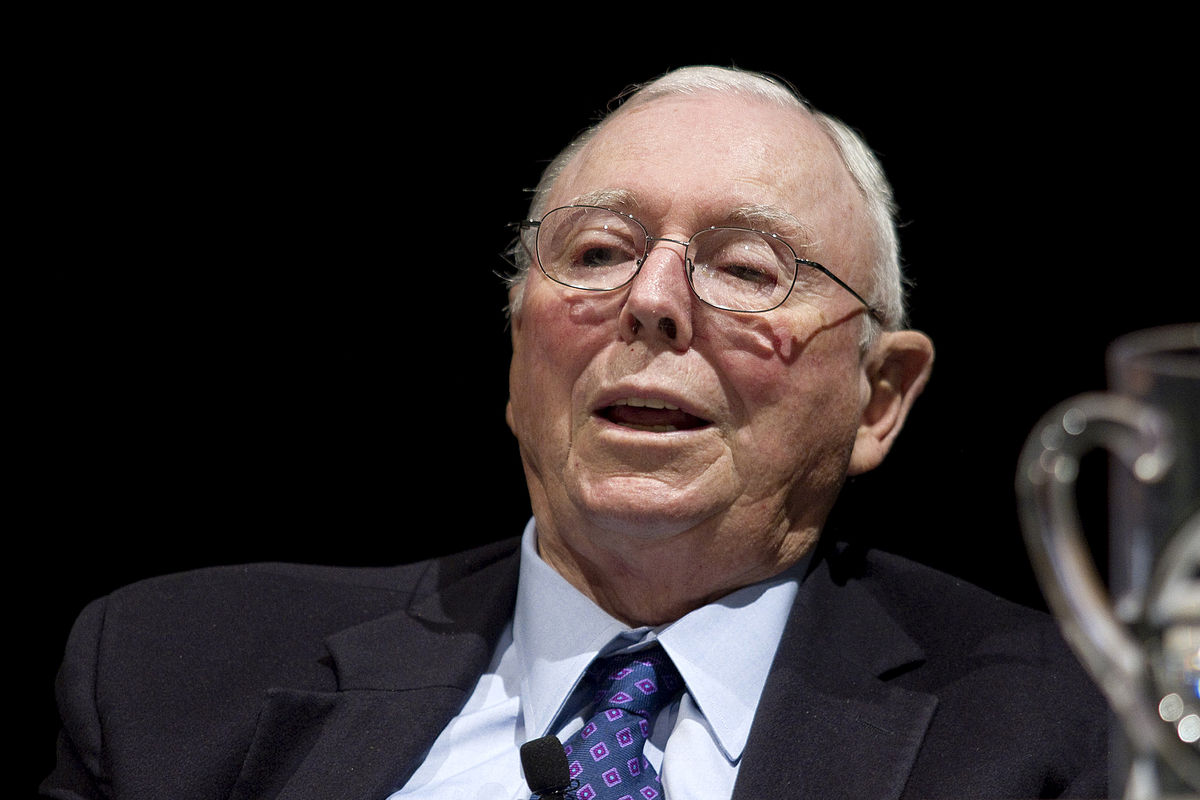With the coronavirus spreading, earnings growth is likely to slow.
by Jurrien Timmer, Director of Global Macro, Fidelity Investments
Key takeaways
- The spread of the coronavirus beyond China suggests that the earnings recovery could happen later than investors had expected.
- If stock valuations fall while earnings remain flat for several more quarters, a 5%–10% pullback in stocks is possible.
- In that scenario, gold, investment-grade bonds, and high-quality dividend-yielding stocks could outperform.
- As always, it's important to be sure your asset mix fits your goals, time horizon, and risk tolerance. If you are uncertain, consider calling a Fidelity financial advisor.
As reports have started to come in that the coronavirus is spreading beyond China (notably South Korea and Italy), it's possible that investors may have rung the all-clear bell a bit too soon.
Perhaps Friday's sell-off is a harbinger of another corrective down-leg for equities as markets price in the possibility that a V-shaped post-virus recovery happens later and from a lower level than expected. Certainly, the bond market is currently suggesting this, with the 10-year Treasury yield back down to 1.44%, the yield curve re-inverting (historically, a signal of recession), and the fed funds curve now pricing in the first of 2 rate cuts in July.
For most investors with a long-term investment plan, these kinds of market pullbacks should be viewed as bumps in the road. If you're investing for the long term, the best response is to take no action. Of course, if you are uncomfortable with the level of risk in your portfolio, it’s always a good idea to speak with a financial advisor about your personal situation.
What happened?
For some investors tracking the coronavirus's effects on the markets, the goal has been to buy stocks (and sell bonds) as soon as the virus reaches a peak in terms of the rate of growth of new cases. That seemed to be happening about 10 days ago as the number of new cases in China was revised higher (from 44,653 on February 12 to 59,804 on February 13) but then started slowing. Currently China has reported 76,936 cases.
The question has been whether those investors would buy the dip, based on the assumption that epidemics and other natural disasters take away growth in the near-term, only to give it back later. Add to this the willingness and ability of governments to throw counter-cyclical stimulus at the problem (fiscal and monetary), and it has been assumed that this too shall pass, and the world will be awash in even more liquidity than before.
Risks to consider
The question is when, and how much of a drawdown we will need to endure before it does. Until the reports came in of an acceleration of new cases in South Korea, events in China seemed to be contained. There was a sense that (a) the much-anticipated (and priced-in) earnings recovery of 2020 would only be delayed by a quarter or so (a short enough time frame for the markets to look through), and (b) that this delay in the earnings rebound would be more than made up for by monetary and fiscal stimulus.
It's a fair enough set of assumptions. And if the S&P 500 wasn't sporting a 19x forward price-to-earnings (PE) multiple after a 33% P/E expansion in 2019 (based on an expected 8% earnings recovery in 2020, according to FactSet), I would be more confident about the market's near-term direction. But what if a 1 or 2 quarter delay turns into 3 or 4 quarters and if more parts of the world go into lockdown, and supply chains struggle to gear up even as demand returns, and all at a time when markets are priced for perfection?
What history suggests
At inflection points it is normal for the market to take turns in terms of being driven by earnings growth or multiple-expansion. In 2018 earnings grew 23% while the P/E ratio dropped 27%, and in 2019 earnings grew only 1% while the P/E multiple expanded 33%. For 2020 my expectation has been that the baton would be passed from valuation back to earnings, with EPS growing 8% (from $161 to $174) while the P/E ratio would fall, at least on a rate-of-change basis.
A corollary to the above scenario is 2015–2016, when the markets were mired in a prolonged state of purgatory caused by a China-led earnings contraction and a simultaneous attempt by the Fed to normalize policy. Back in February 2016 when the S&P 500 (measured by SPX) bottomed at 1810, the P/E multiple had fallen from a +23% growth rate in late 2013 to a 12% year-over-year contraction. Six months later the P/E ratio was up +14% while earnings growth was bottoming at −2%. From that point on the baton was passed from valuation to earnings. Perfectly normal.
Currently earnings are at $161 and expected to grow to $174 in 2020 and $186 in 2021, according to FactSet. By my calculation, that means the market has been priced as if earnings growth hit bottom at +1% in the fourth quarter of 2019. With the Chinese economy slowing and the virus now spreading outside of China, the risk is that the earnings bottom for the S&P 500 is ahead of us, not behind. In my view, we could see growth dip to a negative number in Q1 or Q2 of 2020.
The Q3 estimate has fallen from +9.3% to +8.4%, which is slightly less than usual. This suggests that analysts expect a recovery after Q2. And the Q4 estimate is actually up, from +11.3% in mid-January to +13.2%, suggesting that markets are expecting to be on the other side of the V by then.
What's ahead?
Based on the above, it seems fair to assume that the market has some downside risk over the near-term as analysts reprice the EPS estimates for Q1 and Q2.
At best, we may not see much upside potential until it becomes clear when and at what level the actual earnings bottom will be for this cycle. If the bottom is not at +1% in Q4 (as currently assumed) but at −2% or so in Q2 of 2020, that's not so bad, providing that the losses are made up for on the back end of 2020. But the market is currently priced for an imminent rebound and, in my view, that is not what we are likely to get.
If the P/E ratio contracts on a rate of change basis while earnings flat-line for several more quarters, then it's not far-fetched to see the market decline 5%–10% from here. That would normalize the P/E-side of the valuation vs. earnings dynamic while lining up the delayed inflection point sometime in the next quarter or 2. Makes sense. A 10% correction would also bring the S&P 500 back to its 10-year trend line of around 3050, which was also the top of the trading range in 2018 and 2019.
If the above correction scenario happens, the 10-year yield may well be at 1¼% or less, while the Fed will have likely eased a fourth time. Relatively speaking, gold, investment-grade bonds, and high-quality dividend stocks should shine in the scenario.
What you can do
As always, it's important for investors to maintain a diversified portfolio that balances the level of potential return that is needed against the amount of risk that is appropriate. For most investors, a simple stocks/bonds portfolio is a good place to start. The strong rally in bonds in the face of the sell-off in the stock market is a reminder of the importance of an appropriately diversified mix of stocks, bonds, and cash.
Wondering how to manage your portfolio? If you have a good investment plan, stick with it. If you are not sure, meet with a Fidelity financial advisor to review your portfolio and make sure it aligns with your goals, time horizon, risk tolerance.
About Jurrien Timmer

Jurrien Timmer is the director of global macro in Fidelity's Global Asset Allocation Division, specializing in global macro strategy and active asset allocation. He joined Fidelity in 1995 as a technical research analyst.
Copyright © Fidelity Investments















